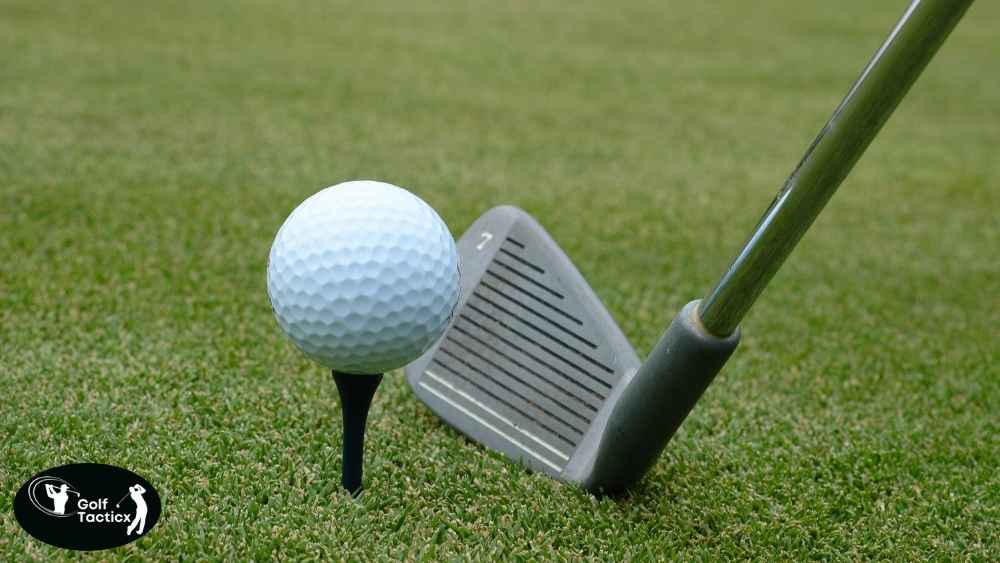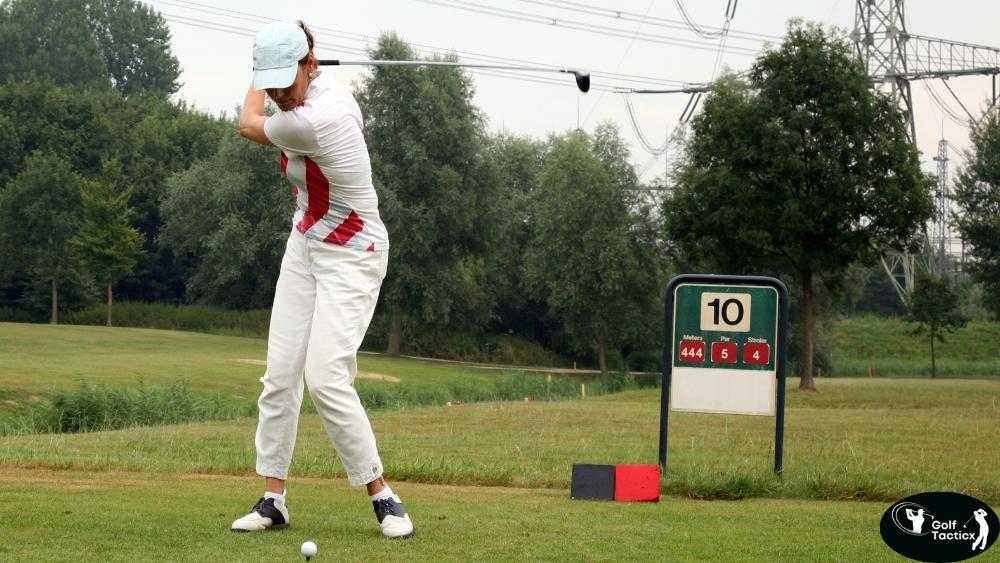In our previous lesson, we explored how to hit a low-spin stinger shot consistently. Today, we’re diving into a fundamental skill that can elevate your game: the ability to shape your shots both ways. Whether you’re aiming to draw the ball (right to left for right-handed golfers) or fade it (left to right), mastering shot shaping opens up a world of strategic possibilities on the course.
By utilizing the Golf Shot Shaping Strategy, you can navigate tight fairways, avoid obstacles, and adapt to different course conditions with confidence. This skill allows you to control the ball’s flight path, giving you an edge in various situations, from avoiding trees to setting up easier approaches to the green.
With practice, you’ll not only gain accuracy but also the versatility to take on any challenge the course throws at you. In this lesson, we’ll walk you through the essential techniques and drills to effectively shape your shots, incorporating the Golf Shot Shaping Strategy into your overall game plan for improved performance.
Understanding Shot Shaping
Shot shaping refers to intentionally altering the ball’s flight path to achieve a desired curve. The two primary types are:
Draw: A shot that curves from right to left for right-handed golfers.
Fade: A shot that curves from left to right for right-handed golfers.
Being proficient in both allows you to navigate obstacles, adapt to course layouts, and enhance your overall control.
Why Is Shot Shaping Important?
Mastering shot shaping offers several advantages:
- Course Management: Navigate doglegs and avoid hazards by tailoring your shot shape.
- Versatility: Adapt to various course conditions and layouts.
- Control: Enhance your ability to place the ball precisely where you want it.
Key Elements of Shot Shaping
To effectively shape your shots, focus on the following:
- Grip: A neutral grip is essential for versatility.
- Stance and Alignment: Align your body and clubface according to the desired shot shape.
- Swing Path: Adjust your swing path to promote the intended curve.
- Clubface Control: Manage the clubface angle at impact to influence spin and direction.
Drills to Improve Shot Shaping
Incorporating specific drills into your practice routine can enhance your ability to shape shots both ways. Here are some effective drills to get you started:
Draw Drill
Place two alignment sticks on the ground: one along your target line and another pointing slightly to the right (for right-handed golfers). Practice swinging along the path of the second stick to promote a draw.
Fade Drill
Set up two alignment sticks: one along your target line and another pointing slightly to the left (for right-handed golfers). Swing along the path of the second stick to encourage a fade.
Split-Hand Drill
Grip the club with your hands separated by a few inches. This drill helps you feel the clubface’s position and promotes better control over shot shape.
Pump Drill
Pause at the top of your backswing, then swing down to waist height and pause again. Repeat this sequence to develop a consistent swing path and improve shot shaping.
One-Handed Drill
Hit shots using only your lead hand (left hand for right-handed golfers) to enhance feel and control, aiding in shot shaping.
Common Mistakes to Avoid
Be mindful of these common errors:
Overcomplicating the Swing: Keep your swing simple and controlled.
Incorrect Alignment: Ensure your body and clubface align correctly with your intended shot shape.
Excessive Grip Pressure: Maintain a relaxed grip to allow for natural shot shaping.
Equipment Considerations
Selecting the right equipment can aid in shot shaping:
Clubs: A driver with adjustable loft can help in shaping shots.
Golf Balls: Choose balls that offer the desired spin characteristics for your shot shaping needs.
How to Choose the Right Club for Shot Shaping
Selecting the correct club is critical when attempting to shape your shots effectively. Here’s a breakdown of how different clubs can influence your ability to shape the ball:
- Driver: Useful for creating distance, but typically harder to shape consistently. Best for straight or slight fades and draws.
- 3-wood & Hybrids: Easier to control and shape than a driver. Ideal for shaping shots around obstacles on long fairways.
- Irons (Short Irons): Short irons allow for more control, making them ideal for intentional shot shaping with more precision. Great for fades and draws from the fairway.
- Wedges: The highest lofts, providing the most control, particularly when trying to shape the ball into or around a green. They are particularly useful for delicate fade or draw shots near the pin.
When shaping shots, it’s important to match the loft and design of your club to the shot you’re trying to achieve. A lower-lofted club will give you more control over trajectory, while a higher-lofted club is better suited for controlled fades or draws that need to stop quickly on the green.
Shot Shaping in Different Weather Conditions
Shot shaping becomes even more important when you play in challenging weather conditions like wind, rain, or cold. Wind, for example, can significantly affect the trajectory and distance of your shots, and knowing how to adjust your shot shape accordingly can be a game-changer.
Here’s how different weather conditions impact shot shaping:
| Weather Condition | Effect on Shot Shaping | Adjustment Tips |
|---|---|---|
| Wind (Headwind) | Reduces distance and height of shots. | Focus on low punch shots with less spin. |
| Wind (Tailwind) | Increases distance and height of shots. | Use higher ball flights to avoid over-hitting. |
| Crosswind | Affects the direction and shape of the ball’s flight. | Play with fades or draws to compensate. |
| Rain | Can affect grip and swing consistency. | Make sure your hands stay dry; adjust stance and swing. |
| Cold Weather | Reduces ball flight distance due to denser air. | Focus on lower, controlled shots to prevent ballooning. |
Shot Shaping for Specific Course Layouts
Knowing when and where to use shot shaping on the course is a skill that comes with experience. Certain course layouts lend themselves to shot shaping more than others, and understanding how to adapt to these situations can dramatically improve your game.
Consider these typical course layouts and how shot shaping fits in:
- Dogleg Holes: Use a draw to cut around the corner and shorten the hole. A well-placed draw can set you up for an easier approach.
- Narrow Fairways: A fade can be useful to avoid hazards on the right side and keep the ball in play. Alternatively, hitting a controlled draw can also be effective depending on your comfort level.
- Water Hazards: When playing toward a water hazard, shaping a shot with a fade can provide more control, as you’re keeping the ball away from danger while maintaining accuracy.
- Greenside Approaches: When you need to approach a green with trees or bunkers around, shaping your shot to avoid these hazards will give you a better angle into the green.
Conclusion
Mastering the ability to shape your shots both ways is a valuable skill that can enhance your versatility and control on the course. By focusing on proper technique, consistent practice, and selecting the right equipment, you can develop this skill and elevate your game. Remember, consistent practice is key to mastering shot shaping. Keep practicing, and you’ll soon be navigating the course with greater confidence and precision.
The Golf Shot Shaping Strategy not only helps you control the ball’s flight but also enables you to use the course’s features to your advantage. Implementing the Golf Shot Shaping Strategy will allow you to approach every shot with a strategic mindset and adaptability.
In our next post, we’ll focus on Shaping Shots Around Obstacles, providing you with strategies to navigate around hazards and improve your shot-making ability.
















Leave a Reply